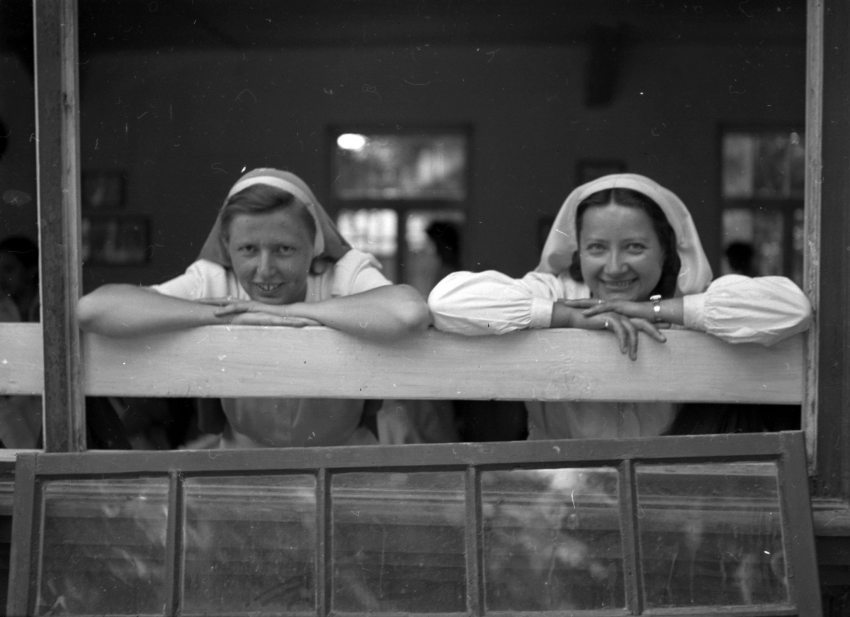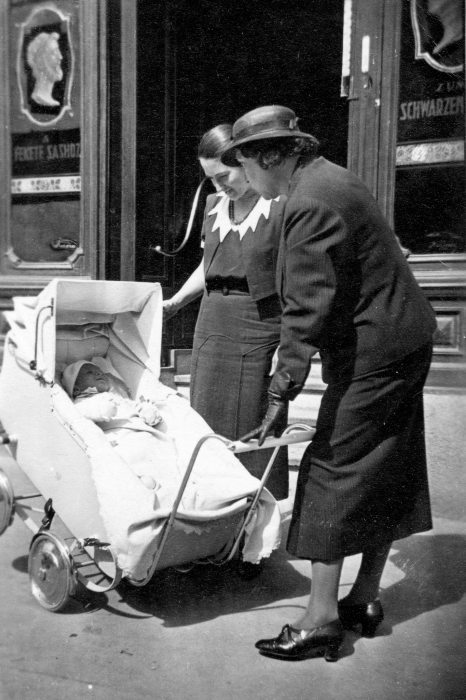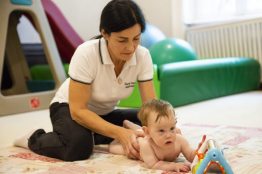Close to the heart of society - the launch of the Hungarian Women's Aid Service
On 13 June 1915, the National Stefania Association was founded to solve the great social challenges of the era, the high infant and maternal mortality rates and the problems resulting from the poor living conditions of young children, and thus the protection of mothers and infants in Hungary began.

The Royal Belgian Princess Stefania was asked to be the patron of the Alliance. She was the widow of the suicidal Crown Prince Rudolf but was later excluded from the highest circles because of her second love marriage (she married a Hungarian count, Elemér Lónyay). At the Lónyay estate, the 'renitent' aristocrats, who for some reason were also not welcome at the Viennese court, were always welcome. She was very fond of Hungarians and Hungarian cuisine, she had her own versions of Hungarian foods that later were named after her: Stefania -meatloaf, -soufflé, - risotto, - cake. Her memory is preserved in Stefania Road in Pest. At the end of the Second World War, the elderly couple had to flee from the Soviets and was hidden in the Pannonhalma Archabbey, where Stefania died at the age of 81.
It has always been my intention and desire to create a work in the field of social structures that will serve the creation of a strong, healthy generation. An institution that strengthens the well-being of family life, that bears fruit in towns and villages. (Letter of Princess Stefania in 1940)
The Stefania Association founded the Central School of Women’s Aid Service Training in 1916. In November 1917, the Minister of the Interior, Gábor Ugron, ordered the development of the Women’s Aid service into a national network, moving from the cities to the villages. This work was supported by renowned medical professors of the time, including Dr. Vilmos Tauffer, obstetrician, Dr. János Bókay, and Dr. Pál Heim, professors of pediatrics, who are outstanding figures in the history of medicine. The so-called’Stepanian nurses’ were responsible for the care of pregnant and nursing mothers, newborn babies, infants, and young children in either a protective home or in their homes.
The branch offices of the National Stefania Association slowly spread throughout the whole country, and the activities of the Women’s Aid nurses became increasingly popular. "By 1929, with the tenacious and persistent work of the organization, we had 205 protective institutes, 32 milk kitchens, 7 mothers’ homes, 15 nurseries, 8 daycare centres and 6 maternity homes in the truncated country", wrote proudly in his memoirs Dr. József Szénásy, the doctor-teacher of the Women’s Aid nurses. By 1940, the growth was striking: 334 institutes for Women’s Aid, 150 milk kitchens, 14 mothers’ homes, 26 maternity homes, 31 nurseries, 30 daycare centres.
No other European country has developed such an effective national network of antenatal, infant, and early childhood care with a social and preventive health focus. The curricula for Women’s Aid nurses were also Hungarian in development, as there were few similar practices abroad in the 1910s and 1930s.
The antidote to superstition
An excellent summary of the history of the Women’s Aid nurses’ service is given by Dr. Márta Kahlichné Simon in her book "The History of the District Nurses’ Profession". The author is still teaching at Semmelweis University at the age of 82. According to her, one of the aims of the creation of the Women’s Aid nurses’ service was to combat health-destroying superstitions.
"After giving birth, if babies had conjunctivitis, they would drip breast milk into their eyes because they thought it would heal it. Or, for example, they gave the baby poppy seed tincture if they wanted to soothe it. But apart from ignorance, the biggest problem was infant mortality: 220-230 out of 1000 newborns died. As a result of industrialization, many rural families moved to Budapest, living in squalid conditions, in crowded flats, where infectious diseases, diphtheria, and tuberculosis ravaged. In addition, husbands had gone off to serve in the army, and wives were left alone with the children, destitute. For them, a relief office was set up - for the first time in the capital - where they could get food and supplies. The trained Women’s Aid nurses of the National Stefania Association worked to save mothers and babies in a society where the attitude was that a peasant would take his livestock to the vet sooner than his feverish child to the doctor”
The villages donated a lot of their own money to set up the local Stefania Branch welfare institutions: a milk and sugar distribution kitchen, a small nursing home, a maternity home, and they were proud of them, almost competing with each other. "You can't create effective mother and child protection with a rigid state administration, you need the heart of society!" - Dr. József Szénásy said. But this also required a lot of financial resources, and in the years after the First World War the Association found itself in a difficult financial situation. Help came from the American Red Cross and the Dutch Mission in 1920 and 1921.
New perspectives and challenges
But those in charge of public welfare policy were thinking on a different, larger scale, especially when there was a great financial opportunity for development: in the early 1930s, the Rockefeller Foundation made a huge donation of around half a million pengő to establish a state institute for training both nurses and Women’s Aid nurses. But this was on the condition that the training had to be adapted to the American model: instead of the Stefania Association's focus on maternal and infant health, it had to provide general health knowledge. From then on, in the 1930s, a kind of rivalry developed between the Stefania Association and the new Green Cross Health Service. The latter was run by the National Institute of Public Health, headed by Béla Johan, and also developed a national network, but expanded its scope. Between 1930 and 1944, Green Cross nurses were responsible for five areas: maternal and infant care, school health, combating venereal diseases and tuberculosis, organising home care for the poor, and social care.
This institutional dichotomy was finally resolved in 1941 - at the cost of no small amount of grievance and public division - when the institutions of the Stefania Association were essentially merged into the Green Cross Health Service, which continued to operate with a strengthened institutional network, thus the system of district nurses appeared. At that time, 1,044 district nurses were serving a population of approximately 7 million people.
dr. Marta Simon Kahlichné possesses the first textbook on nurse education, which states: "It's a very detailed and up-to-date material for the time, it talks about healthy baby expectancy, infant and child care, healthy and sick children, and there's a socio-political section. Often, the district nurse would tell the mother that she could apply for financial support or clothes, but the mother would say she could only sign her name, she couldn't write a claim - so the nurse would write it for her."
In World War II, many nurses died, institutions were destroyed and the system had to be almost completely rebuilt. From 1951, with the socialist reorganisation of the state, the nurses gradually became involved in the medical care of patients. Each district doctor was assigned a district nurse, who sometimes also performed assistant duties. They were responsible for promoting breastfeeding, raising awareness of the importance of compulsory vaccinations, monitoring young children placed in foster care, maintaining regular contact with hospitals, spending two hours a day in the district doctor's practice, and assisting in the care of patients. Between the 1960s and the 1970s, school health care developed significantly, with these nurses responsible for preparing and organising vaccinations and medical examinations, and also giving education lectures.
The development of medical science, as well as health and family policy measures demanded more and more knowledge from the district nurses, so in 1975 the training was raised to college level and its length was increased from two to three years; from 1993 the training period was increased to four years. Specialization is now also possible: regional and youth public health nurses have different roles.
„The ‘district nurses’ or ‘public health nurses’ are not involved in healing, they do not diagnose or advise medication, but tell you what to do if the baby has a fever, how to introduce different foods after breastfeeding, how to dress the baby. They also inform women about what benefits they can claim, which is why the current training includes a social policy component as well as a health component ” – says dr. Márta Kahlichné Simon.
These Hungarian public health nurses are highly qualified and have a broader range of tasks than similar health or social professionals in other countries, which is why the Hungarian Public Health Nurse Service, which was awarded the Hungarian Heritage Prize in 2013, is rightly called a Hungaricum.








